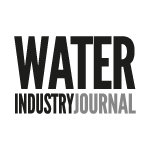Predictive asset maintenance, driven by location data, is a highly valuable tool for the water companies, says Chris Wilton, Sector Lead, Utilities, Ordnance Survey.
The water industry is under pressure to deliver infrastructure that is secure, sustainable and fit for the future. With mounting expectations from regulators and the public, companies must take the necessary steps to ensure long-term water availability while improving environmental impact.
New legislation such as The Water (Special Measures) Act 2025 has given regulators greater powers to tackle poor performance and pollution.
And despite legal obligations to treat sewage and report overflow incidents, many providers struggle to comply due to ageing infrastructure and inadequate monitoring systems. Investigations into unpermitted discharges have highlighted the urgent need for improved oversight and modernisation.
Additionally, 20% of our water is lost to leakage – equivalent to 3 billion litres a day. This loss of water must be addressed now because, as climate change threatens future water availability, an additional 5 billion litres of water will be needed every day by 2050.
An important way of addressing these growing environmental obligations involves investment in better infrastructure, expanding capacity, and adopting new technologies – essential for preventing sewage incidents, reducing leakage, and building greater resilience into the network.
The importance of data in improving efficiencies
Preventing sewage spills and water leakages is a challenge that will require careful planning, with the use of accurate location data creating potential to improve efficiencies in utilities companies.
This data can provide digital representations of the physical world, enabling utilities to more effectively monitor infrastructure, and supporting informed decision-making on resource allocation and ensure sustainable water management.
With Ofwat’s Draft Determinations promising £88 billion of investment for the water sector over five years from 2025, companies now have a real opportunity to leverage high-quality location data to improve their operational efficiency and environmental performance in line with mounting pressures.
As the UK’s national mapping agency, Ordnance Survey understands the importance of location data in making decisions on infrastructure and assets, compliance and more. Using high-quality data is pertinent in enhancing environmental stewardship and aligning with frameworks like the WINEP methodology 2022.
Using location data
The OS NGD Water Network theme provides water companies with comprehensive 3D representations of waterways, enabling more effective monitoring of potential spill locations and allowing for rapid response when incidents do occur.
By combining precise geospatial information, like the OS NGD Water Network theme, with data such as records from the UK’s Met Office, utilities can identify high-risk areas prone to infrastructure failures before they occur.
Assets in these locations can also be assigned a UPRN (Unique Property Reference Number) so that they can be identified reliably, linking assets to specific parts of the water network. This will help to pinpoint assets that may be prone to leaks or at risk of sewage spills.
In recent years, AI models that draw on location data have been created to predict overspill events, reaching remarkable levels of accuracy, achieving rates of up to 91.5% in forecasting sewage incidents.
Ordnance Survey has previously worked in partnership with CGI to harness geospatial data for these predictive models, enabling proactive maintenance. In doing so, water companies can prioritise infrastructure upgrades in areas most vulnerable to spills or leaks, ensuring resources are directed where they’ll have the greatest impact.
Location data also enables more strategic planning of new infrastructure, guiding decisions on asset placement to prevent future incidents.
When an assets UPRN is combined with features from differing OS NGD collections like land and building themes, new water assets can be developed fitting in with the broader landscape (such as pipe layouts and nearby buildings). These insights can guide important decisions related to resource allocation and infrastructure development, informing whether a location would be ideal for asset development or not.
Beyond predictive maintenance and strategic asset planning, location data could also play a crucial role in tracking the spread of contaminants through waterways in the case of a sewage leak, helping companies model pollution dispersal patterns and assess impacts on local ecosystems and biodiversity. This could allow for more targeted remediation efforts and helps quantify the true environmental cost of infrastructure failures.
Water companies are uniquely positioned to support the government’s biodiversity and climate goals, with predictive maintenance of assets, driven by location data, offering enormous capabilities to improve biodiversity in rivers, wetlands, and other water bodies.
However, this can only be achieved through greater collaboration. The sector is becoming more transparent, with utilities increasingly working together and sharing data to build a more resilient and sustainable water system. High-quality location data not only supports regulatory compliance but also helps ensure water quality and safeguard critical water resources for generations to come.
ordnancesurvey.co.uk/customers




